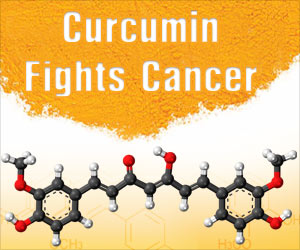Turmeric contains a component called curcumin. Curcumin helps destroy neuroblastoma tumor cells, which occur in children below 5 years of age.
- Neuroblastomas are cancers that occur in children below 5 years of age
- A new study has found that loading nanoparticles with a turmeric component called curcumin can destroy neuroblastoma tumor cells
- The findings show that nanoparticles loaded with curcumin could be a novel method to treat neuroblastoma without toxicity
High-risk neuroblastoma is resistant to traditional therapy, and the survival is poor. A novel approach to target neuroblastoma tumor cells with nanoparticle delivery systems holds promise for the treatment of resistant tumors.
Nanoparticles Loaded with Curcumin to Treat Neuroblastoma
Studies have shown that curcumin has anti-cancer properties, but, its low solubility and poor stability have made its use challenging. The research team from Nemours and UCF found that nanoparticles can be used to deliver curcumin to tumor sites.
For the study, the scientists loaded Cerium oxide nanoparticles with curcumin and coated them with dextran to test cell lines of a high-risk form of neuroblastoma, known as MYCN-amplified, as well as non-amplified neuroblastoma.
"This shows that nanoparticles can be an effective delivery vehicle for cancer drugs. However, more research is needed, but we are hopeful it could lead to more effective treatment of this devastating disease in the future,” said Professor Sudipta Seal, Director of UCF's NanoScience Technology Center and Advanced Materials Processing Analysis Center.
The study is published in Nanoscale.
Neuroblastoma
Neuroblastomas are cancers that often start in the embryo or fetus. Neuroblastomas occur in early nerve cells and commonly form in the tissue of the adrenal glands. These type of cancers occur in children younger than 5-years. High-risk neuroblastoma is hard to treat and is more likely to become resistant to standard therapies, or recur. High-risk neuroblastoma is also associated with late effects after treatments have ended, including hearing loss, developmental delays, and other disabilities.
Facts About Neuroblastoma
- In the United States, about 700 new cases of neuroblastoma are diagnosed each year
- One out of three neuroblastomas starts in the adrenal glands
- One out of four neuroblastomas begins in sympathetic nerve ganglia in the abdomen
- About 90% of the neuroblastoma cases are diagnosed by age 5
- Neuroblastoma is rare in children over the age of 10 years
- About 50-60% of high-risk neuroblastoma patients will have a relapse
- Irina Kalashnikova, Joseph Mazar, Craig J. Neal, Amy L. Rosado, Soumen Das, Tamarah J. Westmoreland, Sudipta Seal. Nanoparticle delivery of curcumin induces cellular hypoxia and ROS-mediated apoptosis via modulation of Bcl-2/Bax in human neuroblastoma. Nanoscale, 2017; 9 (29): 10375 DOI: 10.1039/C7NR02770B















